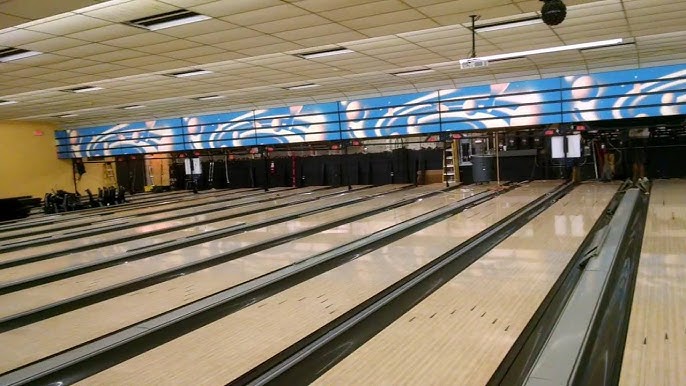Troubleshooting Secrets for Elevator, Sweep Bar & Distributor Mechanism Maintenance

Maintaining AMF-style pinsetter machines requires attention to detail and a solid understanding of their mechanical systems. Among the most critical—and commonly problematic—mechanisms are the elevator, sweep bar, and distributor. These components are responsible for collecting pins, clearing the lane, and distributing pins for the next frame. When any of these systems fail, it can disrupt the entire bowling cycle, leading to downtime and costly repairs.
To maintain operational efficiency and minimize interruptions, bowling centers must have access to reliable bowling parts for AMF and a structured approach to identifying and resolving issues. Sourcing quality components from a trusted supplier ensures your repair efforts are effective and long-lasting.
Understanding the Role of Each Mechanism
Before diving into troubleshooting, it’s important to understand what each component does:
- Elevator: Lifts fallen pins to the distributor. Powered by belts and motors, it must operate smoothly to prevent pin jams.
- Sweep Bar: Clears remaining pins from the lane after the first ball. Its timing and positioning are crucial for safe and efficient operation.
- Distributor: Rotates and places pins into their correct positions on the pin table. It requires accurate motion and alignment to function properly.
Each mechanism has a set of common failure points and warning signs that, when addressed early, can prevent bigger problems.
Elevator Maintenance and Troubleshooting
Common Issues:
- Belt Slippage or Wear: The elevator belt can loosen over time or develop cracks.
- Paddle Misalignment: Paddles can bend or misalign, causing pins to jam.
- Motor Fatigue: Frequent stops and starts wear out motor brushes and bearings.
Solutions:
- Check belt tension weekly. Replace belts showing signs of wear or stretching.
- Realign paddles and inspect for loose fasteners or excessive debris.
- Listen for grinding sounds, which often signal motor trouble. Replace or service motors promptly.
Pro Tip:
Use a flashlight to inspect belt tracking and paddle position during manual cycles. Misalignment is easiest to spot during slow movement.
Sweep Bar System: Timing and Precision
Common Issues:
- Sweep Arm Dragging or Stalling: Often caused by worn bushings or misaligned pivot points.
- Timing Conflicts: If the sweep doesn’t activate or retract properly, it can collide with pins or interfere with other cycles.
- Brake or Clutch Problems: These components help control movement and stopping points.
Solutions:
- Inspect pivot points for signs of wear or corrosion and lubricate monthly.
- Verify sweep bar positioning with reference marks and machine schematics.
- Test clutch operation by engaging the sweep manually and observing motion smoothness.
Pro Tip:
Keep the sweep brake and clutch clean. Oil contamination often causes slipping and poor braking.
Distributor System: Accuracy and Function
Common Issues:
- Arm Jamming or Not Rotating: Caused by faulty motors, broken gear teeth, or obstructions in the pin path.
- Pin Misplacement: Often the result of incorrect alignment between the distributor and the table.
- Sensor Failure: If sensors do not detect pin positions correctly, the cycle may halt or misfire.
Solutions:
- Replace distributor belts if frayed or loose.
- Confirm distributor arm alignment with calibration tools or alignment guides.
- Clean and test sensors regularly, especially in dusty environments.
Pro Tip:
Run a test cycle after replacing any part to ensure the distributor operates at the correct speed and alignment. Manual operation can help identify minor errors before they escalate.
Preventive Maintenance Strategies
Avoiding problems before they occur is more effective than constant repairs. Here’s a simple schedule to follow:
- Daily: Visual inspections for damage or debris in all three systems.
- Weekly: Belt checks and lubrication of moving parts.
- Monthly: Test cycles for timing accuracy and electrical connectivity.
- Quarterly: Replace wear-prone components like bushings, belts, and switches.
Document each maintenance task to build a history that helps anticipate failures and track part performance.
Investing in Long-Term Reliability
Timely maintenance and access to the right parts can dramatically extend the life of your pinsetter systems. Replacing a failing clutch or motor with a high-quality alternative doesn’t just solve the current problem—it reduces future risks.
When sourcing replacements, always opt for parts that meet or exceed OEM standards. Working with a specialized supplier of bowling parts for AMF ensures compatibility and performance, particularly for aging or high-use machines.
Conclusion
The elevator, sweep bar, and distributor are the unsung heroes of an efficient bowling operation. By understanding their functions, recognizing early signs of wear, and using a consistent troubleshooting process, bowling center staff can minimize downtime and maintain high-quality gameplay. Coupled with trusted parts and a structured maintenance schedule, these troubleshooting secrets can keep your AMF-derived pinsetters running smoothly for years to come.





